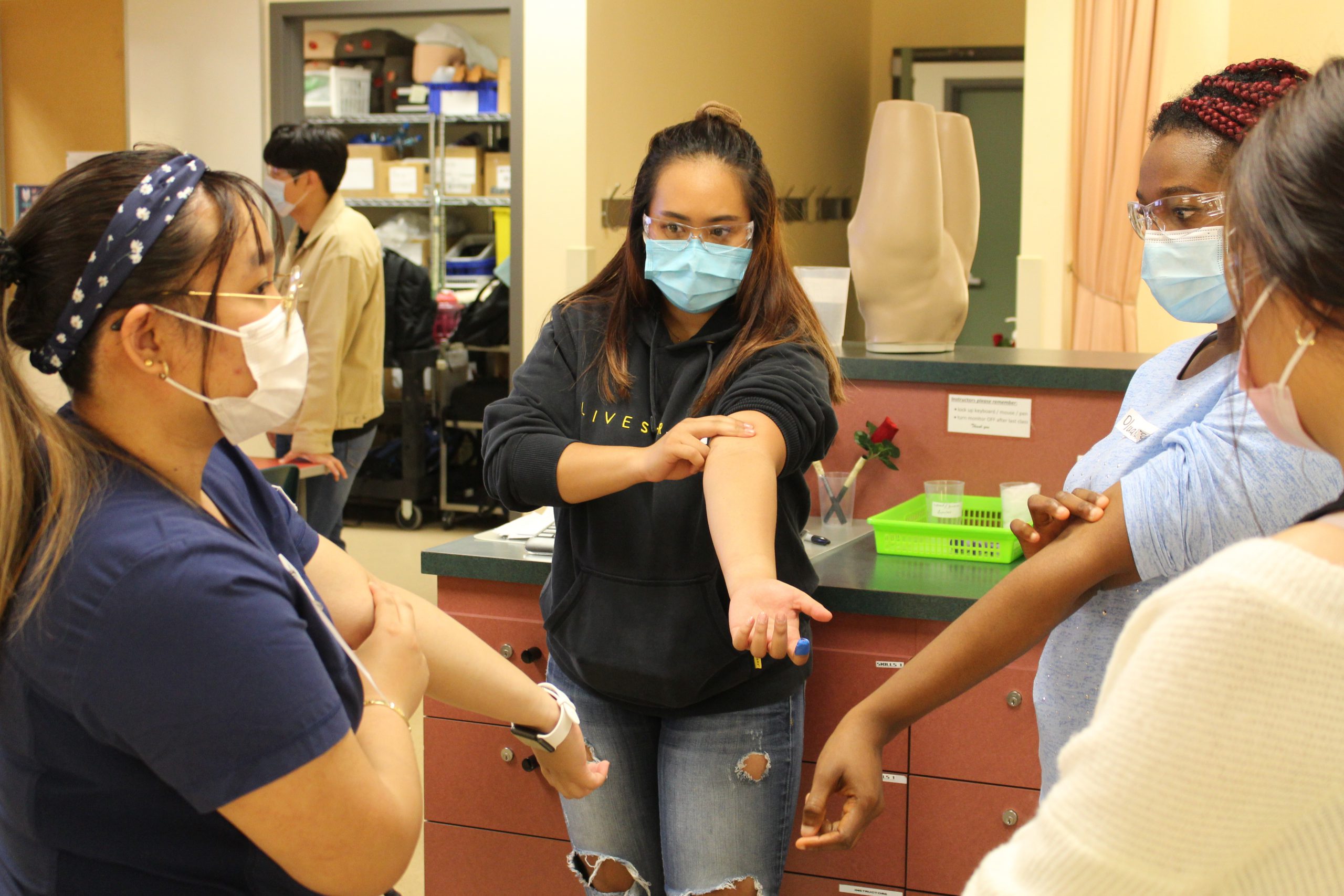
Starting an educational program in the health sciences usually means finding your way around unfamiliar buildings, mingling with new classmates, and getting your academic bearings through a series of orientation sessions and events.
But the threat of COVID-19 made Fall 2020 an introductory season like no other. First-year students in the Rady Faculty of Health Sciences embarked on their programs via orientation activities that were mostly in virtual settings.
Because the university had announced that the fall term would primarily be offered online, the health sciences colleges found creative ways to welcome and acclimatize students.
Activities that were permitted on campus, such as the Max Rady College of Medicine’s White Coat Ceremony, were held with social distancing measures in place.
“Even though we all had to be socially distant from each other during the ceremony, the act of putting on our white coat and reciting the physician’s pledge made me feel more connected to my classmates and excited for what medical school has in store for us,” said first-year medical student Mariel Talabis.
Orientation activities for all the colleges, including presentations from Ongomiizwin – Education and Student Services at Bannatyne Campus (SS@BC) had to be held online.
At the Dr. Gerald Niznick College of Dentistry and School of Dental Hygiene, “in-person orientation activities were decreased, and accessible to only six or seven students at a time,” said John Perry [DMD/76, M.Sc./86], associate dean (academic).
Immunizations, fitting of magnification loupes and an abbreviated tour of the Bannatyne campus were done in person. The Opening Assembly and White Coat Ceremony were held via Zoom.
At the College of Rehabilitation Sciences, new students in occupational therapy, physical therapy and respiratory therapy met in a group session via videoconferencing on Sept. 9. Prior to that, they had virtual orientation sessions in each of their programs.
First-year occupational therapy students had two days of virtual sessions that included meeting their second-year “siblings,” who were able to answer questions about the program or campus.
“That’s something we do every year, except that it had to be done virtually this time,” said Leanne Leclair [M.Sc./04, PhD/14], occupational therapy department head. “We also had to get creative to find ways over Zoom for the students to get to know each other.”
There was an “entrance to the profession” ceremony that students were able to invite their families to view. Tours of the Bannatyne campus were done virtually.
First-year College of Pharmacy students had a one-day virtual orientation where they got to meet faculty and second-year students, who were able to answer any questions.
“We also had the College of Pharmacists of Manitoba provide valuable information to the new and eager first-year PharmD students,” said Cheryl Lee [B.H.Ecol/02], student advisor and program coordinator.
The pharmacy students were on campus for their first in-person lab at the end of September, with the lab spread over two days to accommodate smaller groups.
At the College of Nursing, first-year students started their virtual orientation in August, then attended the annual “skills blitz” in person over two days in early September.
The blitz is an opportunity for the 120 new bachelor of nursing students to gain some hands-on experience in the skills labs at the Helen Glass Centre for Nursing. The learners were divided into groups and introduced to important skills like hand hygiene and taking vital signs. Student mentors were there to offer instruction and answer questions.
Following UM guidelines, all students, faculty and staff had to wear personal protective equipment, as social distancing was not possible in the hands-on sessions.
Kelsey Tonn, a fourth-year nursing student and senior stick of the Nursing Students’ Association, said the new students were grateful to have an opportunity to meet each other in person, as peer support will be important as they go through the program.
“The students were a bit nervous, but not any more than they were the last couple of years I helped with the skills blitz,” she said.
BY ALAN MACKENZIE
